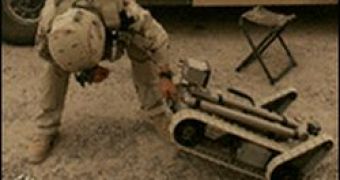Making improved scent-sniffing robots can be in our days a question of security.
That's why scientists study how to get better methods of catching scents.
When a scent sparks into the air, it won't form a gradual perimeter that intensifies as a tracker is moving closer to the scent source. A smell in calm air would be easy to track due to a consistent concentration gradient, called chemotaxis, but in turbulent air the smell spreads away as small, occasional plumes, as in the case of a female moth dissipating pheromones.
Scientists noticed that when a male moth picks up a female's fragmentary scent, he seems to move wildly in all directions while directing to the potential mate.
Now a mixed team from French Pasteur Institute and the University of Marseille and at the University of California, Santa Barbara has realized an algorithm mimicking the zigzagging of moths by sending sensors trying to track a scent on paths that maximize information gain, an approach named "infotaxis".
The main application of the infotaxis would be a software in "sniffer" robots employed for tracking dilute odors coming from chemicals, bombs or drugs. With infotaxis, "you singled-mindedly go to the place where you think you'll gain more information," explains co-author Boris Shraiman, a U.C.S.B. physicist. "If you make a step and you find the source, boy, you've really localized it! That's a very informative step."
Infotaxis combines exploration, where a seeker (robot) intends to store information before making a definitive move in any direction, and exploitation, a trickier method in which the sniffer moves towards the direction where the algorithm estimated the highest probability of finding the source.
When starting a search, initially the robot may know very little about the direction of the scent source: every direction around could equally be leading to the source. At this moment, the seeker, continuously storing information, uses exploration: circular motions, spiraling into increasingly larger radii, until it detects some information: odoriferous molecules. "Once this information accumulates, you have a better image of where the source might be, which is to say, your estimated source location probability distribution is much more peaked at some point," says Shraiman. "Then you start biasing you motion toward that point much more."
When a seeker encounters odor plumes in turbulent air, the rate of stored information may be the same like in chemotaxis' concentration gradient. "The striking feature of the infotaxis model is that the casting and zigzagging steps are not preprogrammed by imposing explicit rules of movement such as 'advance upwind' or 'turn crosswind,'" said Dominique Martinez, a researcher at the Laboratoire Lorrain de Recherche en Informatique et ses Applications. "Rather, they both emerge naturally from locally maximizing information gain."
Photo credit: Kim Komenich

 14 DAY TRIAL //
14 DAY TRIAL //